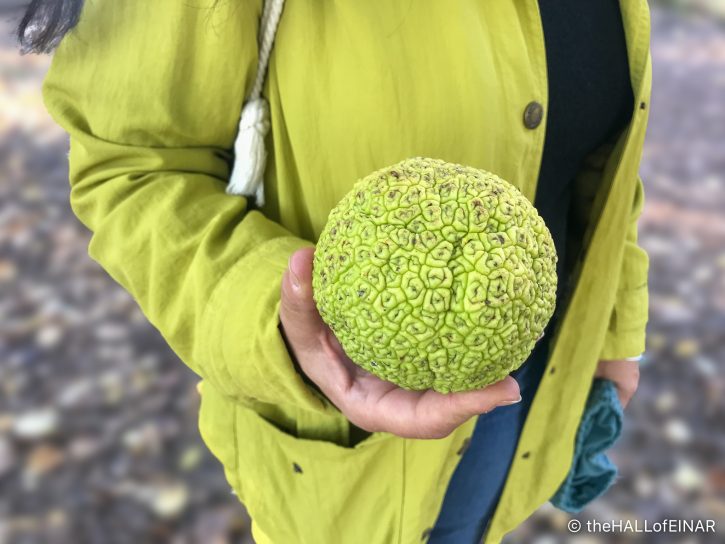Diplomatic ambassadors of life from deep time
You can’t boil it, fry it, roast it or casserole it. There’s nothing you can do to make an Osage Orange edible. It’s not just humans who won’t eat it, either. Other animals won’t touch it, because it’s hard and dry and too big to get your mouth around. Wherever it is grown, these large tennis-ball-green, brain-like fruits lie untouched under the trees which bore them.

This tree is in an Italian park, but the species is a North American one. It’s survived because humans cultivated it as stock-proof fencing. When cut, it regenerates from the base and forms a thick thorny hedge. It wasn’t until 1874, when barbed wire was invented, and eventually superseded it, that its use declined.
Why does nothing eat its fruit? The answer is that the Osage Orange evolved over millions of years, in harmony with large animals which fed upon it and spread its seeds. The co-evolution of these large animals with their favourite fruit-bearing tree led them to a relationship of unique dependence. Their fruits became large so that only large animals could feed on them and spread their seeds far and wide. They evolved a latex when cut, a bland taste and a dry texture meaning they were not prized by other species which would be less effective at seed dispersal. A mystery remains; where have all the animals which fed on them gone?
The Osage Orange’s evolutionary partners must have been megafauna such as the Giant Ground Sloth, Mammoth, Mastodon or Gomphothere. What happened to them? The simple answer is that the arrival of humans in North America led to hunting, and climate change upset the ability of species to survive. All the North American megafauna died, starting some 20,000 years ago. Climate change and hunting killed every species which fed upon it, leaving the Osage Orange as an evolutionary anachronism.
We are now in the middle of the sixth mass extinction of life on earth, and can expect many, many more human-induced evolutionary dead ends. Losing just one species has a knock-on effect upon the complexity of the ancient web of life and destabilises the life which is left.
The Osage Orange is a diplomatic ambassador, here to warn the human race of the precariousness of our life, while we pursue extinction across the globe. It’s a messenger from deep time. Will we listen?
Osage Oranges are related to Mulberries. The Osage Orange’s name is alternatively the mock orange, hedge apple, horse apple, monkey ball, monkey brains and yellow-wood. All great names. Its scientific name is Maclura pomifera.